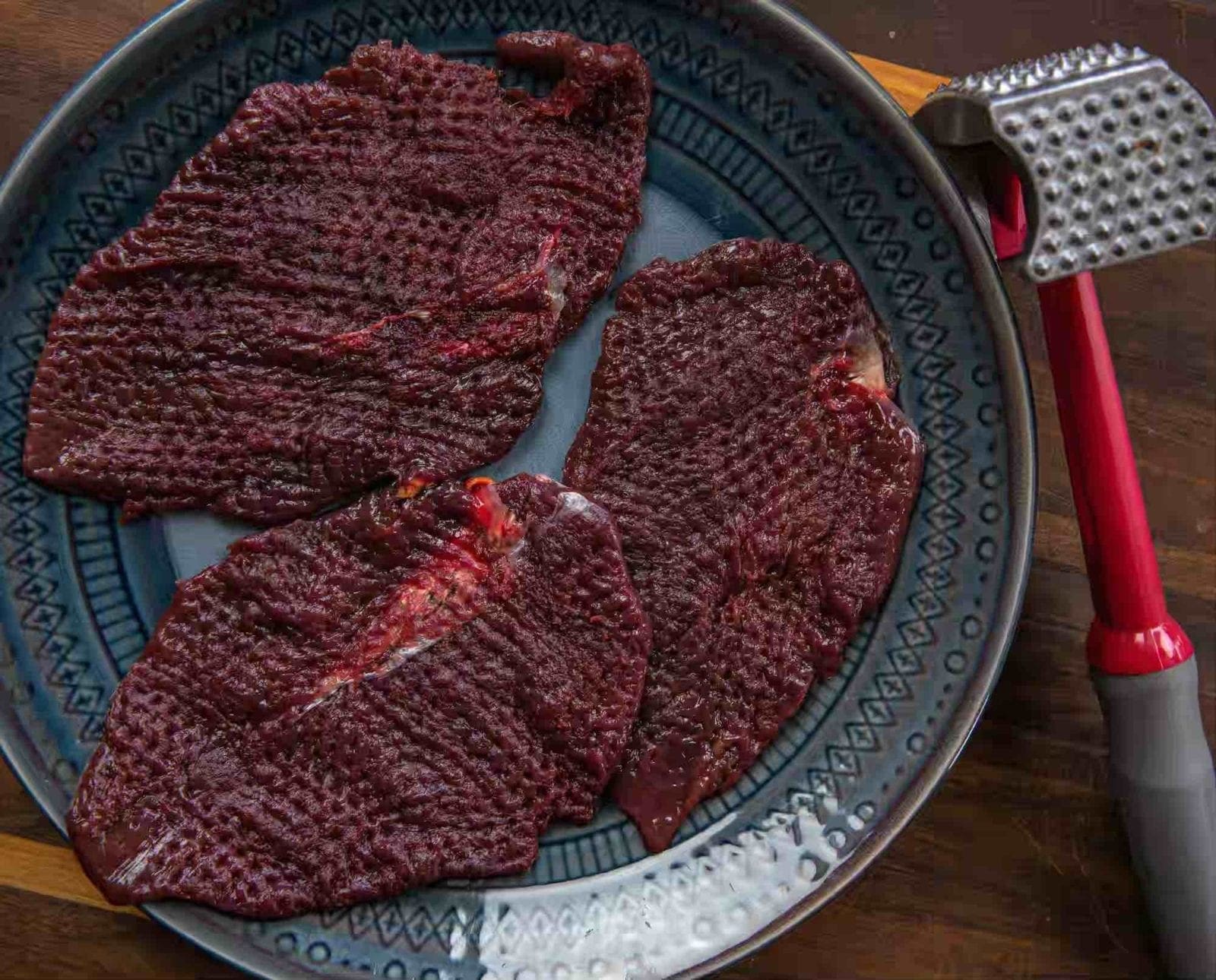Home » Small Game Cooking » How to Tenderize Upland Game Birds
How to Tenderize Upland Game Birds

Jack Hennessy grew up in the South Suburbs of Chicago…
When, how, and why you might choose to tenderize the meat of your upland game birds prior to cooking them
During my four-year stint at the Elk Public House in Spokane, Washington, I likely pounded out thousands of chicken breasts to prep for the grill. As line cooks—mostly greasy-haired, chain-smoking, beer-guzzling proletariat—we had our own terminology for such a process, which I’ll leave to your imagination. Nevertheless, taking a meat mallet to a chicken breast had a couple of distinct purposes. Yes, it tenderized the meat, but more importantly—for the purpose of short ticket times—it made sure that the meat cooked faster. With upland birds, both of these functions apply just as they do with chicken, but the tenderizing process brings with it a few additional benefits as well.
Listen to more articles on Apple | Google | Spotify | Audible
Which cuts of meat should be tenderized and how?
Aside from breasts, you can tenderize thigh meat if you de-bone said meat first. For either the breast or thigh meat, the key is to place the smooth side down, leaving the interior side of the meat facing up. Using a meat mallet tenderizer, lightly pound out the meat. For the prairie chicken breasts pictured here, they ended up being ¼-inch thick, at most.
I prefer to cover the meat with plastic wrap during this process to avoid splashing around my work area. From there, it is somewhat of a fine art. You aren’t just “me smash” as you go to town swinging the mallet. The goal is to lightly pound the meat, but also stretch it out a bit. It is almost an “L” motion as you swing down and from the center out toward the edge of the meat. To a certain extent, you are swiping more than pounding. Doing so, as opposed to just pounding, ensures that you don’t create tears in the meat.
With light, short, swiping “L” strokes, from the middle out to the edge, you will gradually tenderize and flatten the meat. After you feel you’ve stretched the meat adequately, you can lightly tap to further flatten it, this time in a straight-down motion.
Why tenderize upland bird meat?
For the same reason that master BBQ pit masters cut their briskets into pencil-wide slices, tenderizing meat shortens muscle striations and therefore reduces the chewiness of any cut of meat. Tenderizing upland bird meat creates a tender texture because of the shorter and separated muscle fibers.
For larger birds, spring gobblers for example, it’s a very important step if you’re planning to cook a breast whole. You may even wish to butterfly a spring longbeard’s breast before tenderizing it. Otherwise, should you cook that breast whole, the outer layers may dry out before the center is fully cooked. A flatter, tenderized turkey breast will cook much more evenly.
Of course for several recipes (hint: Chicken Fried Prairie Chicken, coming soon) that call for cube steak, you can easily substitute your upland birds if they are thoroughly tenderized.
Also, as mentioned by a couple of wise commenters in my article “How to Avoid Serving Shot in Your Upland Bird Meat,” taking a meat mallet to breasts helps sort shot from meat, as it’s easier to pick out pellets when doing so.
How to make upland bird meat even more tender
If you want to take this process even further, then adding your tenderized and flattened upland bird meat to a marinade or brine will indeed also further tenderize your meat, thanks to the acids in the marinade or the salt from the brine. Thinner meat also means that a marinade will more thoroughly penetrate the meat, as marinades typically only penetrate, at most, a quarter inch per 12-24 hours.
For your older, tougher upland birds, a little bit of tenderizing in conjunction with brining is almost a must. Do remember that, like all meat, the bird meat will plump up when cooked, so this may be something to consider when tenderizing. For example, if pounded out to your desired thickness, perhaps pound a little thinner since the final, cooked meat will be a bit thicker than what is sitting raw on your counter.
And that’s the secret! Reach out to me on Instagram (@WildGameJack) with any questions or comments and be sure to check out my other wild game recipes and cooking instructions here.
Jack Hennessy grew up in the South Suburbs of Chicago and didn't start hunting until he attended graduate school in Spokane, Washington, at the age of 26. Hennessy began work in professional kitchens in high school but didn't start writing wild game recipes until he joined the Spokesman-Review in 2014. Since then, his recipes have appeared with Petersen's Hunting, Backcountry Journal, Gun Dog Magazine, among many others. He now lives with his wife, daughter, and Wirehaired Vizsla, Dudley, in Wichita, Kansas.





When I make Pheasant Marsala or Parmesan or frying, after hammering I throw them in some buttermilk for at least 4 hours. They cut with a fork, so tender!